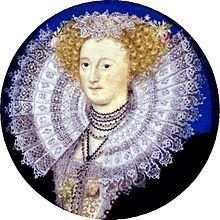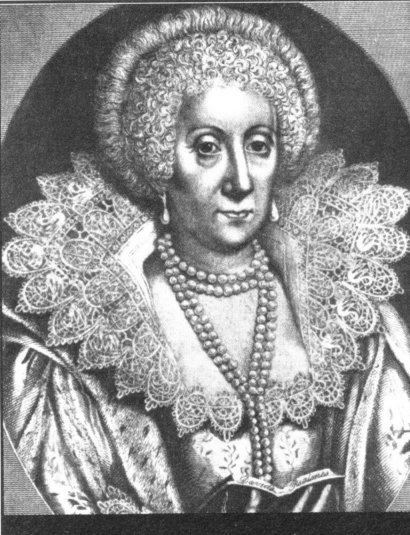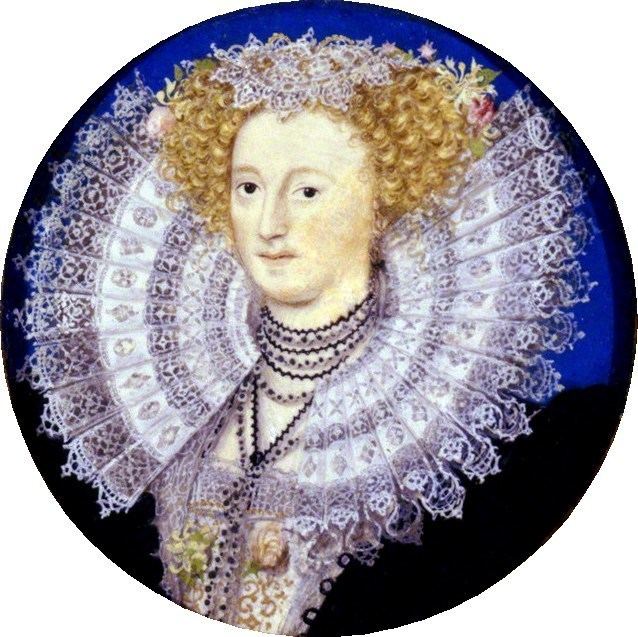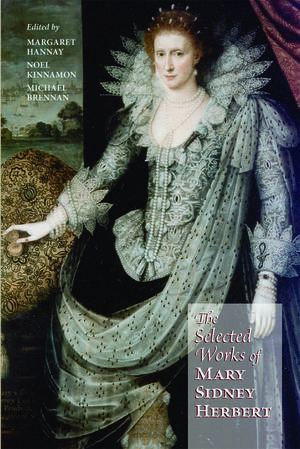Name Mary Sidney | ||
 | ||
Children William Herbert, 3rd Earl of Pembroke, Philip Herbert, 4th Earl of Pembroke Books Sidney Psalms, The Tragedie of Antonie Similar People Philip Sidney, Lady Mary Wroth, Henry Sidney, William Herbert - 3rd Earl o, Robert Sidney - 1st Earl of Le | ||
Parents Henry Sidney, Mary Dudley | ||
Mary Sidney Herbert, The Countess of Pembroke
Mary Herbert, Countess of Pembroke (née Sidney; 27 October 1561 – 25 September 1621) was one of the first English women to achieve a major reputation for her poetry and literary patronage. By the age of 39, she was listed with her brother Philip Sidney, Edmund Spenser, and William Shakespeare, as one of the notable authors of her time in the verse miscellany by John Bodenham, Belvedere. The influence of her Antonius is widely recognized: it stimulated a revived interest in the soliloquy based on classical models, and was a likely source (among others) for both the 1594 closet drama Cleopatra by Samuel Daniel and Shakespeare’s Antony and Cleopatra (1607). Sidney was also known for her translation of Petrarch's "Triumph of Death", but it is her lyric translation of the Psalms that has secured her poetic reputation.
Contents
- Mary Sidney Herbert The Countess of Pembroke
- Mary sidney herbert
- Origins
- Early life
- Marriage progeny
- Life and work
- Death burial
- Assessment
- 2010 discovery of additional work
- References

Mary sidney herbert
Origins

Mary Sidney was born on 27 October 1561 at Tickenhill Palace in the parish of Bewdley in Worcestershire. She was one of the four daughters of Sir Henry Sidney by his wife Mary Dudley, a daughter of John Dudley, 1st Duke of Northumberland. Her brother was the poet Philip Sidney (1554-1586).
Early life

As a child she spent much time at court, where her mother was a Gentlewoman of the Privy Chamber and a close confidante of Queen Elizabeth I. Like her brother, Philip Sidney, she received a humanist education which included classical languages, French, Italian, music and needlework. Following the death of Mary's youngest sister, Ambrosia, in 1575, the queen requested Mary to return to court to join the royal entourage.
Marriage & progeny

In 1577 Mary's uncle Robert Dudley, 1st Earl of Leicester helped her father to arrange her marriage to their close ally, Henry Herbert, 2nd Earl of Pembroke (d.1600). As Countess of Pembroke, Mary was responsible for a number of estates including Ramsbury, Ivychurch (Alderbury, Wilts), Wilton House and Baynard's Castle in the City of London, where it is known that they entertained Queen Elizabeth to dinner. She bore her husband four children:

Life and work

Mary Sidney turned Wilton House into a "paradise for poets", known as the "Wilton Circle" which included Spenser, Daniel, Michael Drayton, Ben Jonson and Sir John Davies, a salon-type literary group sustained by the Countess's hospitality. John Aubrey wrote that "Wilton House was like a college, there were so many and ingenious persons. She was the greatest patroness of wit and learning of any lady in her time". She received more dedications than any other woman of non-royal status. She was regarded as a muse by Daniel in his poem "Delia" (an anagram for ideal).

Her brother, Philip Sidney, wrote much of his Arcadia in her presence, at Wilton House. He also likely began preparing his English lyric version of the Book of Psalms at Wilton as well. He had completed 43 of the 150 Psalms at the time of his death during a military campaign against the Spanish in the Netherlands in 1586. She finished his translation of the Psalms, composing Psalms 44-150 in a dazzling array of verse forms, using the 1560 Geneva Bible and commentaries by John Calvin and Theodore Beza. Hallett Smith has called the psalter a “School of English Versification”: of one hundred and seventy-one poems (Psalm 119 is a gathering of twenty-two separate poems), the verse psalter only replicates the formal structure of a poem, its rhyme scheme and meter, three times. A copy of the completed psalter was prepared for Queen Elizabeth I in 1599, in anticipation of a royal visit, but Elizabeth canceled her planned visit to Wilton. This work is usually referred to as “The Sidney Psalms” or “The Sidney-Pembroke Psalter” and is regarded as an important influence on the development of English religious lyric poetry in the late 16th and early 17th century. John Donne wrote a poem celebrating the verse psalter, and claiming that he could “scarce” call the English Church reformed until its psalter had been modeled after the poetic transcriptions of Philip Sidney and Mary Herbert.

Mary was instrumental in having her brother’s Defence of Poetry (or, Defence of Poesy) put into print, and she circulated the "Sidney-Pembroke Psalter" in manuscript at about the same time. The simultaneous circulation of the two works suggests a proximate relationship in their design: both the Defence and the psalter translation argued (in formally different ways) for the ethical recuperation of poetry as an instrument for moral instruction—and particularly for religious instruction. Mary also took on the task of editing and publishing her brother’s "Arcadia” which he claims to have written in her presence, as The Countesse of Pembroke's Arcadia.
By at least 1591, the Pembrokes were providing patronage to the Pembroke's Men playing company, one of the early companies to perform the works of Shakespeare.
Mary's husband died in 1600 leaving her, as Aubrey reported, with less financial support than she might have expected (through views on its adequacy vary). By some accounts, King James I visited Wilton on his way to his coronation in 1603 and stayed again at Wilton following the coronation to avoid the plague. According to one account Shakespeare's company "The King's Men" performed at Wilton at this time.
In addition to the arts, Mary had a range of interests. She had a chemistry laboratory at Wilton House, where she developed medicines and invisible ink. From 1609–15 Mary Sidney probably spent most of her time at Crosby Hall in the City of London (now relocated as a private residence to Chelsea, London). She traveled with her doctor, Sir Matthew Lister, to Spa on the Continent, where she relaxed by shooting pistols and playing cards. In 1615 she commenced the building of a grand hunting lodge with fine vistas, Houghton House in Bedfordshire, on an estate granted to her by King James I, which she completed in 1621, shortly before her death. It is said that the house, today a ruin, was the model for House Beautiful in John Bunyan's The Pilgrim's Progress (1678).
Death & burial
She died of smallpox on 25 September 1621, aged 59, at her townhouse in Aldersgate Street in the City of London, shortly after King James I had visited her at the newly completed Houghton House. After a grand funeral in St Paul's Cathedral, her body was buried in Salisbury Cathedral, next to that of her late husband in the Herbert family vault, under the steps leading to the choir stalls, where survives her mural monument.
Assessment
In addition to her closet drama Antonius, a translation of the French play Marc-Antoine (1578) by Robert Garnier, Mary is known to have translated two other works: A discourse of life and death by Philippe de Mornay, which was published with Antonius in 1592; and Petrarch’s The triumph of death, which circulated in manuscript. Her original poems include the pastoral, “A dialogue betweene two shepheards, Thenot and Piers, in praise of Astrea,” and the two dedicatory addresses, one to Elizabeth I and one to her brother Philip, contained in the Tixall manuscript copy of her verse psalter. An elegy for Philip, “The dolefull lay of Clorinda,” which was published in Colin Clouts come home againe (1595), has been attributed to both Spenser and to Mary Herbert, but Pamela Coren is probably right to attach the work to Spenser, and certainly right to assert that Mary’s poetic reputation does not suffer from the loss of the attribution.
Although the psalms were not printed during in her lifetime, they had an extensive manuscript publication. There are 17 extant manuscripts today—a considerable number. A later engraving of Herbert shows her holding them. Her influence—through literary patronage, through publishing her brother's works and through her own verse forms, dramas, and translations—can be assessed in a number of ways. Contemporary poets who commended Herbert’s verse psalms include Daniel, Davies, Donne, Drayton, Sir John Harington, Ben Jonson, Aemelia Lanyer, and Thomas Moffet. The importance and influence of the Psalter translation is evident in the devotional lyric poems of Barnabe Barnes, Nicholas Breton, Henry Constable, Francis Davison, Giles Fletcher, and Abraham Fraunce—and its influence upon the later religious poetry of Donne, George Herbert, Henry Vaughan, and John Milton has been critically recognized since Louis Martz placed it at the start of a developing tradition of seventeenth-century devotional lyric.
There has been speculation that she wrote Shakespeare’s plays. Robin P. Williams presents a circumstantial case that Mary Sidney might have written the sonnets attributed to Shakespeare, seventeen of them urging her brother to marry, and most of the others to her lover Doctor Mathew Lister. Williams also sees the Lister relationship behind the play All’s Well That Ends Well. Williams acknowledges that there is no documented evidence for the case, but notes that the detailed knowledge in the plays of sailing, archery, falconry, alchemy, astronomy, cooking, medicine and travel correlate well with what we know of Mary Sidney’s life and interests.
Her poetic epitaph, which is ascribed to Ben Jonson but which is more likely to have been written in an earlier form by poets William Browne and her son William, summarizes how she was regarded in her own day:
Mary Sidney was aunt to the poet Lady Mary Wroth (the daughter of her brother, Robert Sidney).
2010 discovery of additional work
June and Paul Schlueter published an article in The Times Literary Supplement of 23 July 2010, in which they described a manuscript of newly discovered works by Mary Sidney Herbert.
